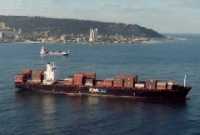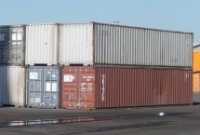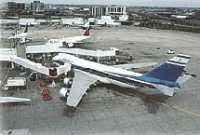The Bank of Israel Foreign Exchange Activity Department advises that in September 2005 the NIS depreciated against the dollar by 1.2 percent, and against the currency basket by 0.6 percent.
Most of the depreciation against the dollar derived from residents' and nonresidents' market activity, and was due in only small measure to global exchange–rate changes. Volume was similar to that in each of the previous two months, but higher than at the beginning of the year.
Exchange-rate risk-as measured by the implied volatility of over-the-counter NIS/$ options-remained stable at a low level of 5.5 percent in all terms to expiration. In emerging markets, too, there was no significant change in exchange-rate risk.
Long-term capital flows to and from Israel resulted in a net capital outflow for the second successive month, in contrast to sizable net capital inflows from the beginning of the year. This was the outcome of stability in nonresidents' long-term capital imports, reflecting among other things a reduction in the extent of portfolio investment on the Tel Aviv Stock Exchange (TASE), together with a certain increase in capital outflow of residents, mainly a rise in the investment by institutional investors in foreign securities abroad.
In September market activity was markedly affected by the realization by a nonresident of a direct investment of $ 1.3 billion in a large communications company, reflected by significant purchases of foreign currency. Nonresidents portfolio investment on the TASE declined again in September, following its decline in August, in contrast to the persistent upward trend in investment in emerging markets in the last four months.
The business sector sold considerable quantities of foreign currency in September, mostly via short-term instruments-via derivatives, taking foreign-currency bank credit, and withdrawing from foreign-currency bank deposits. Sales of foreign currency via derivatives totaled a sizable $ 1 billion, carried out by a small number of companies. Foreign-currency credit taken from the banks and withdrawals from foreign-currency deposits reflected the large transaction mentioned above, and excluding that transaction repayments of foreign-currency bank credit persisted, totaling about $ 3 billion since the beginning of the year. This took place against the background of continued contraction, until its disappearance, of the differential between the dollar and NIS interest rates.
Initial data relating to September indicate that investments abroad of institutional investors, which accelerated in July and August, rose again. Since the beginning of the year institutional investors have invested about $ 1.8 billion in foreign assets. The rise in investments abroad is a long term process that has taken place against the background of the implementation of the final stage of the tax reform at the beginning of 2005.
Households' foreign-currency activity in September was at a modest level, similar to that in the previous months.




